|
1.
|
Kang, R. Y., Park, B. K., Gim, S. B., Choi, H. J., & Kim, D. H. (2009). The effects of HYT on various immunological factors related to pathogenesis of allergic dermatitis in NC/Nga mice induced by Biostir AD. Journal of Haehwa Medicine, 18(2), 47-62.
|
|
2.
|
Lee, J. K., Ha, H., Lee, H. Y., Park, S. J., Jeong, S. L., Choi, Y. J., & SHIN, H. K. (2010). Inhibitory effects of heartwood extracts of Broussonetia kazinoki Sieb on the development of atopic dermatitis in NC/Nga mice. Bioscience, biotechnology, and biochemistry, 1007282075-1007282075.
|
|
3.
|
Lim, H. S., Ha, H., Lee, H., Lee, J. K., Lee, M. Y., & Shin, H. K. (2014). Morus alba L. suppresses the development of atopic dermatitis induced by the house dust mite in NC/Nga mice. BMC complementary and alternative medicine, 14(1), 139.
|
|
4.
|
Aktar, M. K., Kido‐Nakahara, M., Furue, M., & Nakahara, T. (2015). Mutual upregulation of endothelin‐1 and IL‐25 in atopic dermatitis. Allergy, 70(7), 846-854.
|
|
5.
|
Joo, S. S., Won, T. J., Nam, S. Y., Kim, Y. B., Lee, Y. C., Park, S. Y., … & Lee, D. I. (2009). Therapeutic advantages of medicinal herbs fermented with Lactobacillus plantarum, in topical application and its activities on atopic dermatitis. Phytotherapy Research: An International Journal Devoted to Pharmacological and Toxicological Evaluation of Natural Product Derivatives, 23(7), 913-919.
|
|
6.
|
Lim, H. S., Seo, C. S., Ha, H., Lee, H., Lee, J. K., Lee, M. Y., & Shin, H. (2012). Effect of Alpinia katsumadai Hayata on house dust mite-induced atopic dermatitis in NC/Nga mice. Evidence-Based Complementary and Alternative Medicine, 2012.
|
|
7.
|
Lim, H. S., Ha, H., Lee, M. Y., Jin, S. E., Jeong, S. J., Jeon, W. Y., … & Shin, H. K. (2014). Saussurea lappa alleviates inflammatory chemokine production in HaCaT cells and house dust mite-induced atopic-like dermatitis in Nc/Nga mice. Food and chemical toxicology, 63, 212-220.
|
|
8.
|
Kim, M. C., Lee, C. H., & Yook, T. H. (2013). Effects of anti-inflammatory and Rehmanniae radix pharmacopuncture on atopic dermatitis in NC/Nga mice. Journal of acupuncture and meridian studies, 6(2), 98-109.
|
|
9.
|
Lee, J. N., Lee, C. H., & Kim, Y. S. (2015). Protective effects of Opuntia humifusa cladode extracts against biostir AD-induced atopic dermatitis in NC/Nga mice. Food Science and Biotechnology, 24(3), 1123-1130.
|
|
10.
|
Yu, J. S., Kim, J. U., Lee, C. H., Lee, S. R., & Yook, T. H. (2015). The Effects of Lonicerae Flos, Forsythiae Fluctus and Decoction Pharmacopuncture on Atopic Dermatitis in NC/Nga Mice. The Acupuncture, 32(4), 119-131.
|
|
11.
|
Won, T. J., Kim, B., Lim, Y. T., Song, D. S., Park, S. Y., Park, E. S., … & Hwang, K. W. (2011). Oral administration of Lactobacillus strains from Kimchi inhibits atopic dermatitis in NC/Nga mice. Journal of applied microbiology, 110(5), 1195-1202.
|
|
12.
|
Lee, H., Lee, J. K., Ha, H., Lee, M. Y., Seo, C. S., & Shin, H. K. (2012). Angelicae Dahuricae Radix inhibits dust mite extract-induced atopic dermatitis-like skin lesions in Nc/Nga mice. Evidence-based Complementary and Alternative Medicine, 2012.
|
|
13.
|
Lee, H., Ha, H., Lee, J. K., Seo, C. S., Lee, N. H., Jung, D. Y., … & Shin, H. K. (2012). The fruits of Cudrania tricuspidata suppress development of atopic dermatitis in NC/Nga mice. Phytotherapy Research, 26(4), 594-599.
|
|
14.
|
Takeshita, S., Tokunaga, T., Tanabe, Y., Arinami, T., Ichinose, T., & Noguchi, E. (2015). Asian sand dust aggregate causes atopic dermatitis-like symptoms in Nc/Nga mice. Allergy, Asthma & Clinical Immunology, 11(1), 3.
|
|
15.
|
Negi, O., Tominaga, M., Tengara, S., Kamo, A., Taneda, K., Suga, Y., … & Takamori, K. (2012). Topically applied semaphorin 3A ointment inhibits scratching behavior and improves skin inflammation in NC/Nga mice with atopic dermatitis. Journal of dermatological science, 66(1), 37-43.
|
|
16.
|
Yang, G., Choi, C. H., Lee, K., Lee, M., Ham, I., & Choi, H. Y. (2013). Effects of Catalpa ovata stem bark on atopic dermatitis-like skin lesions in NC/Nga mice. Journal of ethnopharmacology, 145(2), 416-423.
|
|
17.
|
Ha, H., Lee, J. K., Lee, M. Y., Lim, H. S., & Shin, H. (2013). Galgeun-tang, an Herbal Formula, Ameliorates Atopic Dermatitis Responses in Dust Mite Extract-treated NC/Nga Mice. Journal of Korean Medicine, 34(4), 1-11.
|
|
18.
|
Won, T. J., Kim, B., Lee, Y., Bang, J. S., Oh, E. S., Yoo, J. S., … & Park, S. Y. (2012). Therapeutic potential of Lactobacillus plantarum CJLP133 for house-dust mite-induced dermatitis in NC/Nga mice. Cellular immunology, 277(1-2), 49-57.
|
|
19.
|
Tanaka, K., Ohgo, Y., Katayanagi, Y., Yasui, K., Hiramoto, S., Ikemoto, H., … & Imai, S. (2014). Anti-inflammatory effects of green soybean extract irradiated with visible light. Scientific reports, 4, 4732.
|
|
20.
|
Karuppagounder, V., Arumugam, S., Thandavarayan, R. A., Pitchaimani, V., Sreedhar, R., Afrin, R., … & Suzuki, K. (2014). Resveratrol attenuates HMGB1 signaling and inflammation in house dust mite-induced atopic dermatitis in mice. International immunopharmacology, 23(2), 617-623.
|
|
21.
|
Matsumoto, M., Ebata, T., Hirooka, J., Hosoya, R., Inoue, N., Itami, S., … & Fujita, A. (2014). Antipruritic effects of the probiotic strain LKM512 in adults with atopic dermatitis. Annals of Allergy, Asthma & Immunology, 113(2), 209-216.
|
|
22.
|
Bae, I. H., Yun, J. W., Seo, J. A., Jung, K. M., Kim, K., Noh, M., … & Lim, K. M. (2010). Immunohistological comparison of cutaneous pathology of three representative murine atopic dermatitis models. Journal of dermatological science, 59(1), 57-60.
|
|
23.
|
Ha, H., Lee, H., Seo, C. S., Lim, H. S., Lee, J. K., Lee, M. Y., & Shin, H. (2014). Artemisia capillaris inhibits atopic dermatitis-like skin lesions in Dermatophagoides farinae-sensitized Nc/Nga mice. BMC complementary and alternative medicine, 14(1), 100.
|
|
24.
|
Eto, H., Tsuji, G., Chiba, T., Furue, M., & Hyodo, F. (2017). Non-invasive evaluation of atopic dermatitis based on redox status using in vivo dynamic nuclear polarization magnetic resonance imaging. Free Radical Biology and Medicine, 103, 209-215.
|
|
25.
|
Yun, J. W., Seo, J. A., Jeong, Y. S., Bae, I. H., Jang, W. H., Lee, J., … & Lim, K. M. (2011). TRPV1 antagonist can suppress the atopic dermatitis-like symptoms by accelerating skin barrier recovery. Journal of dermatological science, 62(1), 8-15.
|
|
26.
|
Kawahara, T., Tsutsui, K., Nakanishi, E., Inoue, T., & Hamauzu, Y. (2017). Effect of the topical application of an ethanol extract of quince seeds on the development of atopic dermatitis-like symptoms in NC/Nga mice. BMC complementary and alternative medicine, 17(1), 80.
|
|
27.
|
Kim, M. S., Kim, J. E., Yoon, Y. S., Kim, T. H., Seo, J. G., Chung, M. J., & Yum, D. Y. (2015). Improvement of atopic dermatitis-like skin lesions by IL-4 inhibition of P14 protein isolated from Lactobacillus casei in NC/Nga mice. Applied microbiology and biotechnology, 99(17), 7089-7099.
|
|
28.
|
Komatsu, K. I., Takanari, J., Maeda, T., Kitadate, K., Sato, T., Mihara, Y., … & Wakame, K. (2016). Perilla leaf extract prevents atopic dermatitis induced by an extract of Dermatophagoides farinae in NC/Nga mice. Asian Pac. J. Allergy Immunol., 34, 272-277.
|
|
29.
|
Sung, Y. Y., Lee, A. Y., & Kim, H. K. (2014). The Gardenia jasminoides extract and its constituent, geniposide, elicit anti-allergic effects on atopic dermatitis by inhibiting histamine in vitro and in vivo. Journal of ethnopharmacology, 156, 33-40.
|
|
30.
|
Wakame, K., Komatsu, K. I., Inagawa, H., & Nishizawa, T. (2015). Immunopotentiator from Pantoea agglomerans prevents atopic dermatitis induced by Dermatophagoides farinae extract in NC/Nga mouse. Anticancer research, 35(8), 4501-4508.
|
|
31.
|
Ha, H., Lim, H. S., Lee, M. Y., Shin, I. S., Jeon, W. Y., Kim, J. H., & Shin, H. K. (2015). Luffa cylindrica suppresses development of Dermatophagoides farinae-induced atopic dermatitis-like skin lesions in Nc/Nga mice. Pharmaceutical biology, 53(4), 555-562.
|
|
32.
|
Fukuyama, T., Tajima, Y., Hayashi, K., Ueda, H., & Kosaka, T. (2011). Prior or coinstantaneous oral exposure to environmental immunosuppressive agents aggravates mite allergen-induced atopic dermatitis-like immunoreaction in NC/Nga mice. Toxicology, 289(2-3), 132-140.
|
|
33.
|
Ignacio, R. M. C., Kwak, H. S., Yun, Y. U., Sajo, M., Yoon, Y. S., Kim, C. S., … & Lee, K. J. (2013). The drinking effect of hydrogen water on atopic dermatitis induced by Dermatophagoides farinae allergen in NC/Nga mice. Evidence-Based Complementary and Alternative Medicine, 2013.
|
|
34.
|
Kumar, P., Hosain, M. Z., Kang, J. H., Takeo, M., Kishimura, A., Mori, T., & Katayama, Y. (2015). Suppression of atopic dermatitis in mice model by reducing inflammation utilizing phosphatidylserine-coated biodegradable microparticles. Journal of Biomaterials Science, Polymer Edition, 26(18), 1465-1474.
|
|
35.
|
Karuppagounder, V., Arumugam, S., Thandavarayan, R. A., Pitchaimani, V., Sreedhar, R., Afrin, R., … & Suzuki, K. (2015). Modulation of HMGB 1 translocation and RAGE/NF κB cascade by quercetin treatment mitigates atopic dermatitis in NC/Nga transgenic mice. Experimental dermatology, 24(6), 418-423.
|
|
36.
|
Sung, Y. Y., Kim, D. S., Yang, W. K., Nho, K. J., Seo, H. S., Kim, Y. S., & Kim, H. K. (2012). Inhibitory effects of Drynaria fortunei extract on house dust mite antigen-induced atopic dermatitis in NC/Nga mice. Journal of ethnopharmacology, 144(1), 94-100.
|
|
37.
|
Kawasaki, H., Tominaga, M., Shigenaga, A., Kamo, A., Kamata, Y., Iizumi, K., … & Yamakura, F. (2014). Importance of tryptophan nitration of carbonic anhydrase III for the morbidity of atopic dermatitis. Free Radical Biology and Medicine, 73, 75-83.
|
|
38.
|
Katayanagi, Y., Yasui, K., Ikemoto, H., Taguchi, K., Fukutomi, R., Isemura, M., … & Imai, S. (2013). The clinical and immunomodulatory effects of green soybean extracts. Food chemistry, 138(4), 2300-2305.
|
|
39.
|
Sung, Y. Y., Yoon, T., Jang, J. Y., Park, S. J., & Kim, H. K. (2011). Topical application of Rehmannia glutinosa extract inhibits mite allergen-induced atopic dermatitis in NC/Nga mice. Journal of Ethnopharmacology, 134(1), 37-44.
|
|
40.
|
Hara, Y., Shoji, J., Hori, S., Ishimori, A., Kato, H., Inada, N., & Sawa, M. (2012). Evaluation of eosinophilic inflammation in a novel murine atopic keratoconjunctivitis model induced by crude Dermatophagoides farinae antigen. Allergology International, 61(2), 331-338.
|
|
41.
|
Chiba, T., Takeuchi, S., Esaki, H., Yamamura, K., Kurihara, Y., Moroi, Y., & Furue, M. (2012). Topical application of PPAR α (but not β/δ or γ) suppresses atopic dermatitis in NC/Nga mice. Allergy, 67(7), 936-942.
|
|
42.
|
Sung, Y. Y., Yoon, T., Jang, J. Y., Park, S. J., Jeong, G. H., & Kim, H. K. (2011). Inhibitory effects of Cinnamomum cassia extract on atopic dermatitis-like skin lesions induced by mite antigen in NC/Nga mice. Journal of Ethnopharmacology, 133(2), 621-628.
|
|
43.
|
Sung, Y. Y., Yang, W. K., Lee, A. Y., Kim, D. S., Nho, K. J., Kim, Y. S., & Kim, H. K. (2012). Topical application of an ethanol extract prepared from Illicium verum suppresses atopic dermatitis in NC/Nga mice. Journal of ethnopharmacology, 144(1), 151-159.
|
|
44.
|
Lee, S. H., Yoon, J. M., Kim, Y. H., Jeong, D. G., Park, S., & Kang, D. J. (2016). Therapeutic effect of tyndallized Lactobacillus rhamnosus IDCC 3201 on atopic dermatitis mediated by down‐regulation of immunoglobulin E in NC/Nga mice. Microbiology and immunology, 60(7), 468-476.
|
|
45.
|
Lee, N., Shin, J. U., Jin, S., Yun, K. N., Kim, J. Y., Park, C. O., … & Lee, K. H. (2016). Upregulation of CD47 in regulatory T cells in atopic dermatitis. Yonsei medical journal, 57(6), 1435-1445.
|
|
46.
|
Ha, H., Lee, H., Seo, C. S., Lim, H. S., Lee, M. Y., Lee, J. K., & Shin, H. (2014). Antiatopic Dermatitis Effect of Artemisia iwayomogi in Dust Mice Extract-Sensitized Nc/Nga Mice. Evidence-Based Complementary and Alternative Medicine, 2014.
|
|
47.
|
Kawahara, T., Hanzawa, N., & Sugiyama, M. (2018). Effect of Lactobacillus strains on thymus and chemokine expression in keratinocytes and development of atopic dermatitis-like symptoms. Beneficial microbes, 9(4), 643-652.
|
|
48.
|
Bae, C. J., Lee, J. W., Bae, H. S., Shim, S. B., Jee, S. W., Lee, S. H., … & Hwang, D. Y. (2011). Detection of allergenic compounds using an IL-4/luciferase/CNS-1 transgenic mice model. Toxicological Sciences, 120(2), 349-359.
|
|
49.
|
Kim, B. H., Lee, W. J., Sanjel, B., Cho, K., Son, Y. K., Park, H. Y., … & Shim, W. S. (2019). Extracts of the leaves of Pyrus ussuriensis Maxim. Alleviate itch sensation via TSLP-dependent manner in mouse models of atopic dermatitis. Physiology & behavior, 210, 112624.
|
|
50.
|
Kamo, A., Tominaga, M., Kamata, Y., Kaneda, K., Ko, K. C., Matsuda, H., … & Takamori, K. (2014). The excimer lamp induces cutaneous nerve degeneration and reduces scratching in a dry-skin mouse model. Journal of Investigative Dermatology, 134(12), 2977-2984.
|
|
51.
|
Yamada, Y., Ueda, Y., Nakamura, A., Kanayama, S., Tamura, R., Hashimoto, K., … & Ishii, R. (2016). Biphasic increase in scratching behaviour induced by topical application of Dermatophagoides farinae extract in NC/Nga mice. Experimental dermatology, 25(8), 611-617.
|
|
52.
|
Yamaga, K., Murota, H., Tamura, A., Miyata, H., Ohmi, M., Kikuta, J., … & Katayama, I. (2018). Claudin-3 loss causes leakage of sweat from the sweat gland to contribute to the pathogenesis of atopic dermatitis. Journal of Investigative Dermatology, 138(6), 1279-1287.
|
|
53.
|
Lee, H., Ha, H., Lee, J. K., Park, S. J., Jeong, S. I., & Shin, H. K. (2014). The leaves of Broussonetia kazinoki siebold inhibit atopic dermatitis-like response on mite allergen-treated Nc/Nga mice. Biomolecules & therapeutics, 22(5), 438.
|
|
54.
|
Kamo, A., Tominaga, M., Matsuda, H., Kina, K., Kamata, Y., Umehara, Y., … & Takamori, K. (2016). Neurotropin suppresses itch-related behavior in NC/Nga mice with atopic dermatitis-like symptoms. Journal of dermatological science, 81(3), 212-215.
|
|
55.
|
Lee, Y. S., Choi, J. H., Lee, J. H., Lee, H. W., Lee, W., Kim, W. T., & Kim, T. Y. (2016). Extracellular superoxide dismutase ameliorates house dust mite‐induced atopic dermatitis‐like skin inflammation and inhibits mast cell activation in mice. Experimental dermatology, 25(8), 630-635.
|
|
56.
|
Cho, B. S., Kim, J. O., Ha, D. H., & Yi, Y. W. (2018). Exosomes derived from human adipose tissue-derived mesenchymal stem cells alleviate atopic dermatitis. Stem cell research & therapy, 9(1), 187.
|
|
57.
|
Kadoyama, K., Takenokuchi, M., Matsuura, K., Shichiri, H., Watanabe, A., Yamaguchi, H., … & Taniguchi, T. (2019). Therapeutic effects of shikonin on skin lesions in mouse models of allergic dermatitis and wound. Traditional & Kampo Medicine.
|
|
58.
|
Kim, J. H., Shin, J. U., Kim, S. H., Noh, J. Y., Kim, H. R., Lee, J., … & Kim, H. K. (2018). Successful transdermal allergen delivery and allergen-specific immunotherapy using biodegradable microneedle patches. Biomaterials, 150, 38-48.
|
|
59.
|
Jin, S., Shin, J. U., Noh, J. Y., Kim, H., Kim, J. Y., Kim, S. H., … & Lee, J. S. (2016). DOCK 8: regulator of Treg in response to corticotropin‐releasing hormone. Allergy, 71(6), 811-819.
|
|
60.
|
Hazama, Y., Uchida, W., Maekawa, T., Miki, R., Oshima, S., Egawa, Y., … & Seki, T. (2017). Preclinical Study of Tacrolimus Ointment for Prevention of Its Systemic Absorption in Atopic Dermatitis Model Mice According to Their Skin Conditions. Iryo Yakugaku (Japanese Journal of Pharmaceutical Health Care and Sciences), 43(9), 477-491.
|
|
61.
|
Nomoto, M. (2017). Pruni Cortex Extract Accelerates Wound Healing in a Mouse Model of Atopic Dermatitis. J Nutr Disorders Ther, 7(220), 2161-0509.
|
|
62.
|
Watanabe, K., Karuppagounder, V., Sreedhar, R., Kandasamy, G., Harima, M., Velayutham, R., & Arumugam, S. (2018). Basidiomycetes-X, an edible mushroom, alleviates the development of atopic dermatitis in NC/Nga mouse model. Experimental and molecular pathology, 105(3), 322-327.
|
|
63.
|
Hyung, K. E., Kim, S. J., Jang, Y. W., Lee, D. K., Hyun, K. H., Moon, B. S., … & Park, E. S. (2017). Therapeutic effects of orally administered CJLP55 for atopic dermatitis via the regulation of immune response. The Korean Journal of Physiology & Pharmacology, 21(3), 335-343.
|
|
64.
|
강란이, 박보경, 김선빈, 최학주, & 김동희. (2009). 아토피피부염 동물 병태모델에서의 형개연교탕 (荊芥連翹湯) 의 면역조절작용. 혜화의학회지, 18(2), 47-62.
|
|
65.
|
Hwang, Y., Chang, B., Kim, T., & Kim, S. (2019). Ameliorative effects of green tea extract from tannase digests on house dust mite antigen-induced atopic dermatitis-like lesions in NC/Nga mice. Archives of dermatological research, 311(2), 109-120.
|
|
66.
|
Shin, J. U., Kim, S. H., Noh, J. Y., Kim, J. H., Kim, H. R., Jeong, K. Y., … & Yong, T. S. (2018). Allergen‐specific immunotherapy induces regulatory T cells in an atopic dermatitis mouse model. Allergy, 73(9), 1801-1811.
|
|
67.
|
Hirota, R., & Ngatu, N. R. (2018). Experimental Anti-Allergic and Immunomodulatory Effects of Vernonia amygdalina-Derived Biomaterials, Vernodalin and Its Leaf Extracts. In Occupational and Environmental Skin Disorders (pp. 105-115). Springer, Singapore.
|
|
68.
|
Oh, C. T., Kwon, T. R., Seok, J., Choi, E. J., Kim, S. R., Jang, Y. J., … & Kim, M. N. (2016). Effect of a 308‐nm excimer laser on atopic dermatitis‐like skin lesions in NC/Nga mice. Lasers in surgery and medicine, 48(6), 629-637.
|
|
69.
|
Satoh, B., Satoh, Y., & Satoh, F. (2010). U.S. Patent Application No. 12/810,730.
|
|
70.
|
Lee, D., Seo, Y., Kim, Y. W., Kim, S., Choi, J., Moon, S. H., … & Kim, T. Y. (2019). Profiling of remote skeletal muscle gene changes resulting from stimulation of atopic dermatitis disease in NC/Nga mouse model. The Korean Journal of Physiology & Pharmacology, 23(5), 367-379.
|
|
71.
|
Yamada, Y., Ueda, Y., Nakamura, A., Kanayama, S., Tamura, R., Hashimoto, K., … & Ishii, R. (2018). Immediate‐type allergic and protease‐mediated reactions are involved in scratching behaviour induced by topical application of Dermatophagoides farinae extract in NC/Nga mice. Experimental dermatology, 27(4), 418-426.
|
|
72.
|
Shoji, J., Nakanishi, Y., Ishimori, A., Sakimoto, T., Inada, N., & Nemoto, N. (2015). Involvement of chemokines and a CD4-positive T cell subset in the development of conjunctival secondary lymphoid follicles in an atopic keratoconjunctivitis mouse model. International archives of allergy and immunology, 167(3), 147-157.
|
|
73.
|
Yeo, E. J., Han, J. K., & Kim, Y. H. (2008). Topical Application of Atopy cream-Jawoongo ointment (AJ) of Ointment Inhibits Biostir mite antigen cream induced Atopy Dermatitis by Local Action in NC/Nga Mice. Journal of Haehwa Medicine, 17(2), 185-198.
|
|
74.
|
Yamaguchi, Y., Nagasawa, T., Kubota, Y., Shimura, N., & Musashi, M. (2019). U.S. Patent Application No. 16/099,982.
|
|
75.
|
Park, E. J., Kim, J. Y., Jeong, M. S., Park, K. Y., Park, K. H., Lee, M. W., … & Seo, S. J. (2015). Effect of topical application of quercetin-3-O-(2 ″-gallate)-α-l-rhamnopyranoside on atopic dermatitis in NC/Nga mice. Journal of dermatological science, 77(3), 166-172.
|
|
76.
|
Choi, C. Y., Kim, Y. H., Oh, S., Lee, H. J., Kim, J. H., Park, S. H., … & Chun, T. (2017). Anti‐inflammatory potential of a heat‐killed Lactobacillus strain isolated from Kimchi on house dust mite‐induced atopic dermatitis in NC/Nga mice. Journal of applied microbiology, 123(2), 535-543.
|
|
77.
|
Gil, T. Y., Kang, Y. M., Eom, Y. J., Hong, C. H., & An, H. J. (2019). Anti-Atopic Dermatitis Effect of Seaweed Fulvescens Extract via Inhibiting the STAT1 Pathway. Mediators of Inflammation, 2019.
|
|
78.
|
Kang, Y. M., Lee, K. Y., & An, H. J. (2018). Inhibitory Effects of Helianthus tuberosus Ethanol Extract on Dermatophagoides farina body-induced Atopic Dermatitis Mouse Model and Human Keratinocytes. Nutrients, 10(11), 1657.
|
|
79.
|
임윤영, 장우선, 김형미, 김인수, 이진웅, 김명남, & 김범준. (2011). NC/Nga 마우스에서의 아토피피부염 유사 병변에 대한 Light Emitting Diode 의 치료 효과. 천식 및 알레르기, 31(3), 207-214.
|
|
80.
|
Kim, W. K., Jang, Y. J., Han, D. H., Seo, B., Park, S., Lee, C. H., & Ko, G. (2019). Administration of Lactobacillus fermentum KBL375 causes taxonomic and functional changes in gut microbiota leading to improvement of atopic dermatitis. Frontiers in molecular biosciences, 6, 92.
|
|
81.
|
Lee, J. N., Kim, H. E., & Kim, Y. S. (2014). Anti-diabetic and anti-oxidative effects of Opuntia humifusa cladodes. Journal of the Korean Society of Food Science and Nutrition, 43(5), 661-667.
|
|
82.
|
Gang, S. G., Cho, N. J., Kim, J. Y., Han, H. S., & Kim, K. K. (2018). Investigation of Antimicrobial and Anti-inflammatory Activities of the Hyeonggaeyeongyotang Gagambang. The Korea Journal of Herbology, 33(4), 35-41.
|
|
83.
|
Hwang, J. H., Nam, J. H., Kim, W. K., & Bae, H. S. (2016). Effects of Agrimoniae Herba 30% ethanol extract on LPS-induced inflammatory responses in RAW264. 7 macrophage cells. The Korea Journal of Herbology, 31(2), 63-69.
|
|
84.
|
김승재. (2015). Immunostimulatory Effects of Silver Nanoparticles in Immune Cells and their Relevance to Atopic Dermatitis (Doctoral dissertation, Graduate School, Yonsei University).
|
|
85.
|
Umehara, Y., Kamata, Y., Tominaga, M., Niyonsaba, F., & Takamori, K. (2017). U.S. Patent Application No. 15/507,152.
|
|
86.
|
Yoshida, S., Yasutomo, K., & Watanabe, T. (2016). Treatment with DHA/EPA ameliorates atopic dermatitis-like skin disease by blocking LTB4 production. The Journal of Medical Investigation, 63(3.4), 187-191.
|
|
87.
|
윤홍화, 조병옥, 이혜승, 추정임, & 장선일. (2016). 포도가지와 새송이버섯 혼합 추출물의 항염증과 아토피 피부염 개선 상승효과. 한국식품과학회지, 48(6), 582-589.
|
|
88.
|
Yoon, T., Yoon-Young, S. U. N. G., Yang, W. K., & Kim, H. K. (2019). U.S. Patent No. 10,328,113. Washington, DC: U.S. Patent and Trademark Office.
|
|
89.
|
Cho, J. W., Jeong, Y. S., Han, J., Chun, Y. J., Kim, H. K., Kim, M. Y., … & Cho, S. M. (2011). Skin hydration and collagen synthesis of AF-343 in HS68 cell line and NC/Nga mice by filaggrin expression and suppression of matrix metallopreteinase. Toxicological research, 27(4), 225.
|
|
90.
|
Lee, M. H., Lee, Y. S., Kim, H. J., Han, C. H., Kang, S. U., & Kim, C. H. (2019). Non-thermal plasma inhibits mast cell activation and ameliorates allergic skin inflammatory diseases in NC/Nga mice. Scientific reports, 9(1), 1-10.
|
|
91.
|
Yang, G., Cheon, S. Y., Chung, K. S., Lee, S. J., Hong, C. H., Lee, K. T., … & An, H. J. (2015). Solanum tuberosum L. cv jayoung epidermis extract inhibits mite antigen-induced atopic dermatitis in NC/Nga mice by regulating the Th1/Th2 balance and expression of filaggrin. Journal of medicinal food, 18(9), 1013-1021.
|
|
92.
|
Hagiyama, M., Inoue, T., Furuno, T., Iino, T., Itami, S., Nakanishi, M., … & Ito, A. (2013). Increased expression of cell adhesion molecule 1 by mast cells as a cause of enhanced nerve–mast cell interaction in a hapten‐induced mouse model of atopic dermatitis. British Journal of Dermatology, 168(4), 771-778.
|
|
93.
|
Kim, B. B., Kim, J. R., Kim, J. H., Kim, Y. A., Park, J. S., Yeom, M. H., … & Kang, N. J. (2013). 7, 3′, 4′-trihydroxyisoflavone ameliorates the development of dermatophagoides farinae-induced atopic dermatitis in NC/Nga mice. Evidence-Based Complementary and Alternative Medicine, 2013.
|
|
94.
|
Jeong, Y. I., Hong, S. H., Cho, S. H., Lee, W. J., & Lee, S. E. (2015). Toxoplasma gondii infection suppresses house dust mite extract-induced atopic dermatitis in NC/Nga mice. Allergy, asthma & immunology research, 7(6), 557-564.
|
|
95.
|
김지혜. (2017). Development of Dermatophagoides farinae-loaded microneedle patches for allergen specific immunotherapy in allergic diseases (Doctoral dissertation, Graduate School, Yonsei University).
|
|
96.
|
Kim, C. H., Cheong, K. A., Lim, W. S., Park, H. M., & Lee, A. Y. (2016). Effects of low‐dose light‐emitting‐diode therapy in combination with water bath for atopic dermatitis in NC/Nga mice. Photodermatology, photoimmunology & photomedicine, 32(1), 34-43.
|
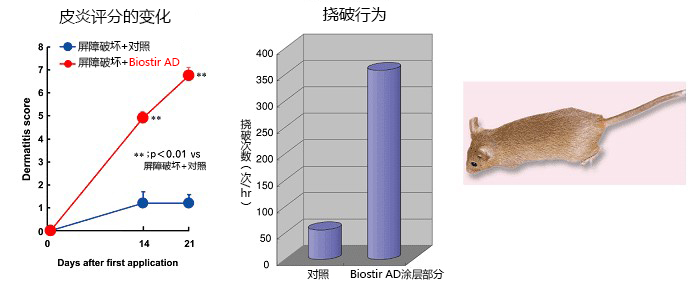

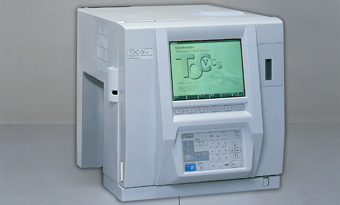
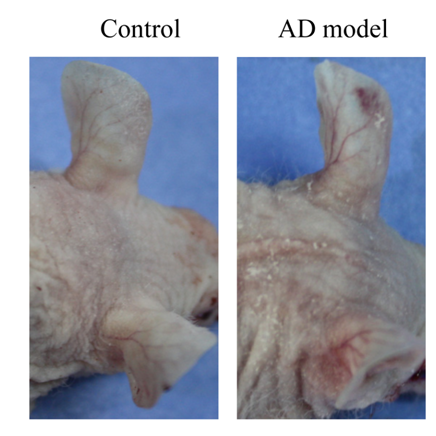
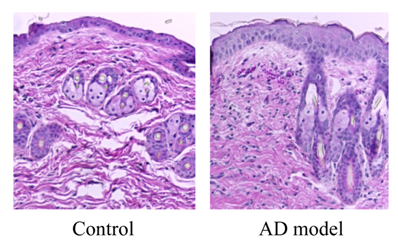
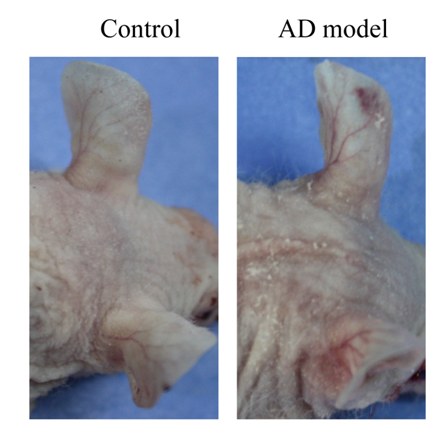
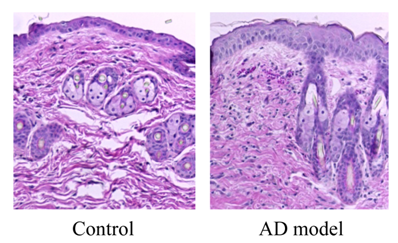
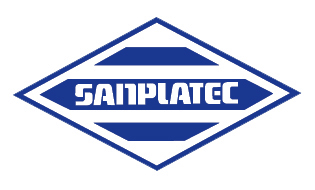

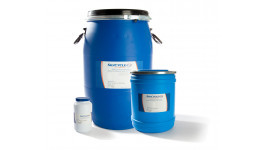
 Loading…
Loading…